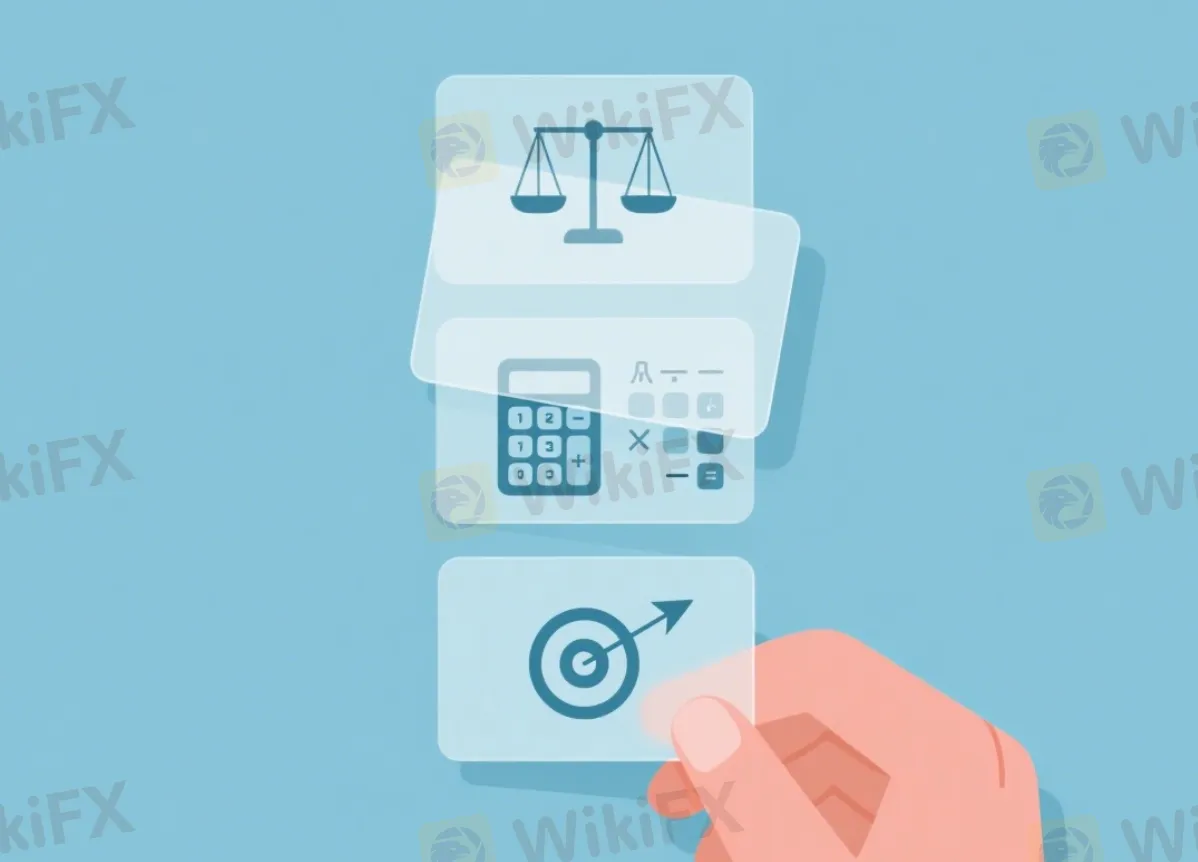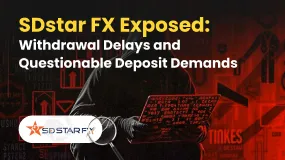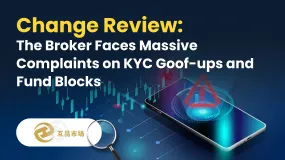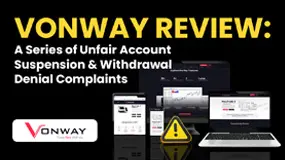Abstract:Throughout this guide, we have dissected the concept of a forex lot from every angle. We started with a simple definition. We explored the different types. We connected the abstract idea of units to the tangible reality of your account's profit and loss.
We've learned that a lot in forex is not just a number you enter into a trading platform. It is the primary tool for implementing your risk management strategy. The questions "what is a lot in forex?" and "how much is 1 lot forex?" are secondary to the most important question: "What is the correct lot size for this trade, with my account, right now?"
Your First Step in Risk
Before we discuss strategies, indicators, or currency pairs, we must address the single most important decision you make in every trade. This decision isn't about when to buy or sell. It's about how much to trade. This is the concept of lot size. It is the absolute cornerstone of professional risk management.
A “lot” in forex trading is the standard unit size of a transaction. It simply measures the quantity of the base currency you are buying or selling.
Understanding what is lot size in forex is not optional. It is fundamental to controlling your risk exposure. Get it right, and you can withstand the market's inevitable swings. Get it wrong, and even a winning strategy can lead to a blown account.
In this comprehensive guide, we will move beyond simple definitions. We will explore not just what a lot is, but how to calculate its direct financial impact. Most importantly, we'll provide a framework for choosing the right size for your specific account, your strategy, and your risk tolerance. This ensures you can trade with confidence and control.

The Core Definition of a Lot
To truly grasp what is forex lot size, we must first understand why the market needs a standardized unit. The foreign exchange market is the largest and most liquid financial market in the world. Trillions of dollars are traded daily. To manage this immense volume, transactions must be standardized.
A Simple Analogy
Think of it like buying eggs. You don't go to the store and ask for 17 individual eggs. You ask for a dozen or a dozen and a half. The “dozen” is a standard unit that makes the transaction simple and universally understood.

Similarly, in forex, you don't place a trade for €1,372. Instead, you trade in standardized quantities called lots. This system creates efficiency and clarity for all market participants. It works for huge investment banks and individual retail traders alike. It ensures everyone is speaking the same language of volume.
The Official Definition
Now for the specific numbers. The primary question we must answer is, “how much is 1 lot in forex?”
A standard lot is 100,000 units of the base currency. The base currency is always the first currency listed in a pair (e.g., the EUR in EUR/USD).
Let's make this concrete. If you are trading the EUR/USD pair, you are speculating on the value of the Euro relative to the US Dollar.
- Trade Action: You decide to buy 1 standard lot of EUR/USD.
- Transaction Meaning: You are executing a trade to purchase €100,000.
- Underlying Value: The value of your position is one hundred thousand Euros.
This direct answer to “how much is one lot in forex” is the bedrock of understanding trade value. When your trading platform shows a “Volume” or “Quantity” of 1.0, it refers to one standard lot. That's 100,000 units of the base currency. Answering “what is lot forex” always begins with this foundational number.
Types of Forex Lot Sizes
While the standard lot is the official benchmark, it is not the only option. In fact, for most retail traders, it's far too large to be used safely. Brokers recognized this. They introduced smaller, more flexible lot sizes to make the market accessible. Answering the question “what are lot sizes in forex” requires looking at this full range of options.
The Standard Lot (1.0)
As we've established, a standard lot represents 100,000 units of the base currency. This is the domain of institutional traders, hedge funds, and retail traders with exceptionally large account balances.
Trading with standard lots means each pip movement in price has a significant monetary value. This leads to substantial profits or losses very quickly. It requires significant capital to absorb potential drawdowns without receiving a margin call.
The Mini Lot (0.10)
A mini lot is one-tenth the size of a standard lot. It represents 10,000 units of the base currency. On a trading platform, this is typically represented as a volume of 0.10.
The mini lot became a game-changer for retail trading. It allows traders with moderate account sizes (e.g., a few thousand dollars) to participate in the market with more reasonable risk levels. It offers a good balance between meaningful profit potential and manageable risk. Many intermediate traders who have gained experience and built their capital find the mini lot to be their preferred size.
The Micro Lot (0.01)
A micro lot is one-tenth the size of a mini lot. It's one-hundredth of a standard lot. It represents 1,000 units of the base currency. You will see this on your platform as a volume of 0.01.
We consider the micro lot the single most important tool for a new trader. It is the recommended starting point for anyone learning the ropes or trading with a smaller account balance (under $2,000). Micro lots allow for highly precise risk management. They enable you to risk very small amounts of capital per trade while you test strategies and learn to manage your emotions.
The Nano Lot (0.001)
A nano lot is the smallest available size. It represents just 100 units of the base currency. It corresponds to a volume of 0.001 on a trading platform.
It's important to note that not all forex brokers offer nano lots. They are used for very specific purposes. These include testing automated trading systems (Expert Advisors) with minimal risk. They're also for traders with extremely small account balances (e.g., under $100) who still want to adhere to strict risk management rules.
Lot Sizes at a Glance
To see the relationship clearly, let's put it all into a simple table. This visual comparison is key to understanding the different scales you can trade on.
This table provides an at-a-glance reference that you should commit to memory. The pip value is the crucial link between the abstract concept of lot size and your real-world profit and loss.
Impact on Your P&L
Understanding the definitions is the first step. The critical “aha!” moment for a trader comes when they see how lot size directly determines the financial outcome of every single trade. Your choice of lot size is a volume dial for your profit and loss.
A Quick Pip Refresher
Before connecting lot size to your P&L, let's quickly clarify what a “pip” is. A pip stands for “Percentage in Point” or “Price Interest Point.” It's the smallest standard unit of price change in the forex market.
For most currency pairs (like EUR/USD, GBP/USD, AUD/USD), a pip is the fourth decimal place (0.0001). For Japanese Yen (JPY) pairs, it's the second decimal place (0.01). It's the standardized measure of how much a currency pair's exchange rate has moved.
The Lot Size-Pip Value Link
The monetary value of a single pip is not fixed. Its value is determined directly by the lot size you are trading. This is the most critical relationship to understand in risk management.
The rule of thumb for any pair where the US Dollar is the second currency (the “quote” currency) is beautifully simple. This applies to pairs like EUR/USD or GBP/USD. It aligns with our table above:
- A 1.00 Standard Lot gives a pip value of approximately $10.
- A 0.10 Mini Lot gives a pip value of approximately $1.
- A 0.01 Micro Lot gives a pip value of approximately $0.10 (10 cents).
When the USD is not the quote currency (e.g., USD/CHF or USD/JPY) or is not in the pair at all (e.g., EUR/GBP), the calculation is slightly different. But your trading platform will always show you the exact pip value for your chosen lot size. For now, mastering the XXX/USD relationship is key.
P&L Scenarios in Action
Let's see how this plays out. Imagine you've analyzed the GBP/USD pair and believe it's going to rise. You enter a trade and it moves 50 pips in your favor. What's a lot size in forex worth in this scenario? It depends entirely on your chosen volume.
Scenario: A 50-Pip Profit on a GBP/USD Trade
- With a 0.01 Micro Lot: Your profit is 50 pips * $0.10 per pip = $5.00.
- With a 0.10 Mini Lot: Your profit is 50 pips * $1.00 per pip = $50.00.
- With a 1.00 Standard Lot: Your profit is 50 pips * $10.00 per pip = $500.00.
The same analysis and the same 50-pip market move produced three vastly different outcomes. The allure of the $500 profit is strong. But risk is a two-way street.
Now, let's consider the same trade, but this time the market moves 50 pips against you and hits your stop loss.
Scenario: A 50-Pip Loss on a GBP/USD Trade
- With a 0.01 Micro Lot: Your loss is 50 pips * $0.10 per pip = -$5.00.
- With a 0.10 Mini Lot: Your loss is 50 pips * $1.00 per pip = -$50.00.
- With a 1.00 Standard Lot: Your loss is 50 pips * $10.00 per pip = -$500.00.
This demonstrates the raw power of lot size. It is the lever that magnifies both your winning and losing trades. Choosing the wrong size can make a minor, acceptable loss catastrophic for your account.
A Practical Trade Walkthrough
Theory is essential. But seeing the decision-making process in a real-world context makes it stick. Let's walk through a realistic scenario that we see traders face every day. This will show how the question of “what is a lot size forex” is answered not by a chart, but by a calculator and a risk plan.

The Trading Scenario
We will establish a clear set of parameters for our hypothetical trade. This is exactly the kind of planning you should do before ever clicking the “buy” or “sell” button.
- Account Balance: $1,500
- Currency Pair: EUR/USD
- Action: Buy (Go Long)
- Entry Price: 1.0750
- Stop Loss: 1.0700
- Take Profit: 1.0850
From these parameters, we can deduce two crucial facts. Our risk on the trade, measured in pips, is the distance from our entry to our stop loss: 1.0750 - 1.0700 = 50 pips. Our potential reward is the distance to our take profit: 1.0850 - 1.0750 = 100 pips. This gives us a favorable 1:2 risk-to-reward ratio.
Now, let's analyze this trade using two different lot sizes.
Option 1: The Prudent Approach
A prudent trader's first thought is not “how much can I make?” It's “how much can I lose?” They will choose a lot size that keeps their risk within a predefined limit. Let's assume they follow the common 1-2% rule and decide to risk a very small portion of their capital. They start with a single micro lot.
- Chosen Lot Size: 0.01 (Micro Lot)
- Pip Value: Approximately $0.10
- Calculate Total Risk: 50 pips (stop loss distance) * $0.10/pip = $5.00 risk.
- Analyze the Risk: A $5 risk on a $1,500 account represents just 0.33% of the total capital (($5 / $1500) * 100).
This is exceptional risk management. The trader can be completely wrong on this trade, and the financial damage is negligible. They can live to trade another day without any significant psychological or financial impact.
Option 2: The Overleveraged Approach
Now let's consider a more aggressive or inexperienced trader. They see the 100-pip profit potential and want to maximize it. They decide to use a mini lot, which seems reasonable on the surface.
- Chosen Lot Size: 0.10 (Mini Lot)
- Pip Value: Approximately $1.00
- Calculate Total Risk: 50 pips (stop loss distance) * $1.00/pip = $50.00 risk.
- Analyze the Risk: A $50 risk on a $1,500 account represents 3.33% of the total capital (($50 / $1500) * 100).
While a 3.33% risk might not seem enormous in isolation, it is well above the 1-2% limit recommended for professional and consistent trading. A string of just three or four such losses could wipe out over 10% of their account. This leads to panic, poor decisions, and “revenge trading.”
The Verdict on Viability
The trade idea itself was sound, with a good risk-to-reward ratio. However, the lot size choice single-handedly determined whether the trade was a viable, professional setup or a reckless gamble.
For this specific scenario—a $1,500 account and a 50-pip stop loss—the micro lot was the responsible choice. The mini lot exposed the account to an uncomfortable level of risk. It turned a good trade idea into a poor trade. This proves that understanding what is a forex lot size is fundamentally a question of risk management first, and profit potential a distant second.
Choosing The Right Lot Size
We have now moved from the “what” to the “why.” The final, most crucial step is learning “how.” How do you, for every single trade, calculate and choose the perfect lot size for your specific situation?
It's not guesswork. It's a simple, repeatable process based on three key factors. Mastering this process is what separates disciplined traders from gamblers. Answering “what's a lot size in forex for me?” is a personal calculation.
Factor 1: Account Size
This is the foundation. Your lot size must always be relative to your total trading capital. The golden rule of professional risk management is to never risk more than 1-2% of your account equity on a single trade.
Let's turn this rule into a practical, step-by-step formula. This calculation should become second nature.
1. Determine Your Risk in Dollars: Take your account balance and multiply it by your chosen risk percentage (we'll use 1%).
- Example: $1,500 Account Balance * 1% (0.01) = $15 max risk per trade.
2. Determine Your Stop Loss in Pips: Based on your technical analysis, identify where your stop loss needs to be. This is a technical decision, not a financial one.
- Example: From our previous scenario, the stop loss distance was 50 pips.
3. Calculate the Required Pip Value: Divide your maximum dollar risk by your stop loss in pips. This tells you how much each pip can be worth while staying within your risk limit.
- Example: $15 (max risk) / 50 pips (stop loss) = $0.30 per pip.
4. Select Your Lot Size: Now, match the required pip value to the lot sizes we know.
- Example: A pip value of $0.30 is equivalent to 3 micro lots (3 * $0.10/pip). So, the correct trade volume is 0.03.
This methodical approach ensures that your risk is always controlled. It works regardless of where your stop loss needs to be placed.
Factor 2: Your Strategy
Your trading style heavily influences your typical stop loss distance. This in turn affects your lot size.
A scalper aims for very small profits (e.g., 5-10 pips) with a very tight stop loss. They might appear to use larger lot sizes. However, their risk in dollars might be the same as a swing trader's because their stop loss in pips is so small.
A swing trader holds positions for days or weeks. They will naturally have a much wider stop loss (e.g., 100-200 pips) to account for daily volatility. To adhere to the 1-2% risk rule, they must use a significantly smaller lot size to compensate for the wide stop.
Factor 3: Pair Volatility
Not all currency pairs are created equal. Some are notoriously volatile, while others are more stable. A pair like GBP/JPY can move hundreds of pips in a single day. A pair like AUD/NZD might move a fraction of that.
This inherent volatility must be factored into your stop loss placement. A volatile pair requires a wider stop loss to avoid being knocked out of a trade by random noise. As we learned from our formula, a wider stop loss necessitates a smaller lot size to maintain the same dollar risk. Always respect the personality of the pair you are trading.
Your Pre-Trade Checklist
To crystallize this process, here is a simple checklist to run through mentally before you enter any trade. This habit builds discipline and removes emotion from the position-sizing decision.
- What is my total account equity right now?
- What is my maximum dollar risk for this single trade (e.g., 1% of equity)?
- Based on my analysis, how many pips away is my logical stop loss?
- What is the resulting required value per pip (Dollar Risk / Pips Risk)?
- Which lot size, and how many of them, correctly achieves this pip value?
Your Key to Trading Longevity
Throughout this guide, we have dissected the concept of a forex lot from every angle. We started with a simple definition. We explored the different types. We connected the abstract idea of units to the tangible reality of your account's profit and loss.
We've learned that a lot in forex is not just a number you enter into a trading platform. It is the primary tool for implementing your risk management strategy. The questions “what is a lot in forex?” and “how much is 1 lot forex?” are secondary to the most important question: “What is the correct lot size for this trade, with my account, right now?”
Mastering lot size calculation is not about chasing enormous profits on a single trade. It is about survival. It's about ensuring that no single trade, or even a string of losing trades, can ever knock you out of the game.
Ultimately, your lot size selector is your most important risk management tool. Use it wisely. Use it methodically. Use it to protect your capital. This is the foundation upon which a long and potentially successful trading career is built.










